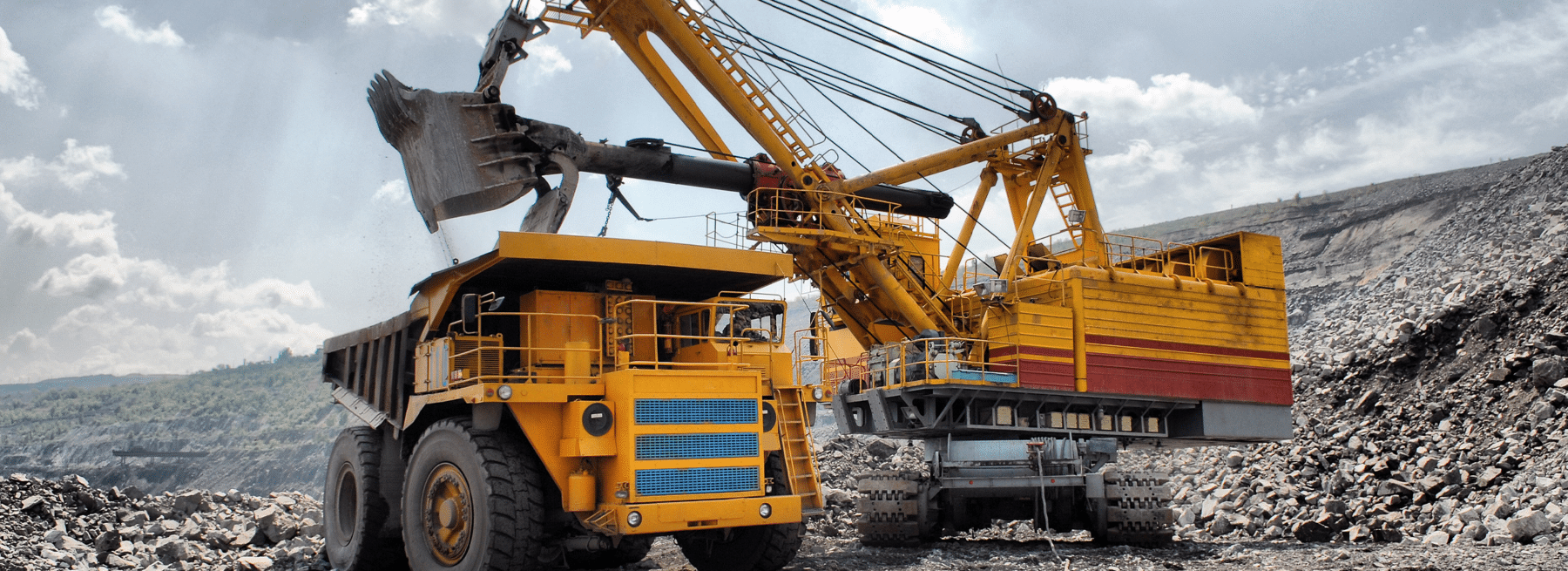The pandemic has been good for the mining industry as the top 50 mining companies have largely outperformed market indexes. The industry’s market capitalization went up by 40% between 2019 and 2021. The mining industry has enjoyed record years in 2021 and 2022 as supply chain disruptions and increased demand have raised the price of commodities according to McKinsey.
While there’s a lot to celebrate, there’s a long road ahead as the mining industry faces a few big hurdles. They need to be prepared to address the following challenges as identified by McKinsey.
- Labor shortages
- Underinvestment
- Political risks
- Low productivity
McKinsey proposes a few areas of focus for the mining industry. One of them is to invest in technology.
How Technology Can Benefit the Mining Industry
Technology can speed operations, which in turn, improves operational efficiencies and performance. It helps mining companies do more with less. Technology can help close labor shortage gaps, boost productivity, and mitigate risk. Here are five ways technology can benefit the mining industry.
1. Increase operational efficiencies
Investing in technology and reengineering processes can create lean mining operations. Companies use technology to optimize operations by assigning repetitive tasks to automation tools while moving workers to value-added tasks. Newer equipment also has lower energy costs because they’re more energy efficient.
The result is an increase in throughput (see No. 3) and performance. This reduces injuries, human errors, and costs associated with medical bills, absenteeism, and mistakes.
2. Increase safety
Automation taking over heavy and repetitive tasks increases miner safety. It’s also crucial to do a review of current equipment since some may be outdated, unsafe, and inefficient. Technology keeps improving and becoming safer as new technologies incorporate safety features.
There are smart protective personal equipment (PPE) and wearables that contain sensors. These can alert workers if they’re in danger. Older, outdated equipment costs more to maintain and upkeep. Besides, replacement parts may be hard to come by and they’re likely to be expensive.
3. Increase throughput
Newer equipment can handle bigger jobs and do things faster. They are more durable, efficient, and easier to operate.
4. Increase profits
Instead of looking at buying new technology and equipment as an expense, consider them an investment that will pay dividends. You may not see the results right away, but they will come. New equipment can do more in less time and it’s easier and cheaper to maintain.
5. Increase uptime
While buying new technology requires large sums of cash, it can lead to a fast return on investment. Outdated mining equipment can stop working and it typically uses a lot more energy. Repairs may not be possible or at least, not quickly. This affects uptime. Newer technology is less likely to go down and affect uptime.
6. Decrease carbon footprint
New mining technologies are more energy-efficient, allowing workers to extract materials with a lessened impact on the environment.
Top Technology Innovations for the Mining Industry
Here are the top mining industry technology innovations to enhance productivity, operations, safety, and security.
1. Wearables
The wearables market has skyrocketed. According to Grand View Research market analysis, wearables were worth $61 billion in 2022. The research predicts the industry will see a compound annual growth rate (CAGR) of 14.6% from 2023 to 2030.
Wearables can come integrated with sensors and the Internet of Things (IoT) containing Wi-Fi, GPS, and radio frequency identification (RFID). The mining industry can use them to keep track of equipment and workers, which improves safety. If an emergency arises, wearables can speed up response time since it will be easier to locate workers quickly.
Here’s an example of how wearables can have a huge impact. A mining company used Cat Driver Safety System (DSS) to measure the fatigue levels in its operations. The fatigue management case study shows almost 160 sleep events took place over a 40-day period at a mine.
Multiple miners were falling asleep each day. It did not surprise the company these microsleep events happened, but the number of them that occurred did. This allowed them to implement a fatigue intervention plan that led to 94% fewer fatigue events in 90 days.
It’s also possible to insert RFID tags into workers’ PPE such as pants, safety hats, vests, and boots. Large equipment and vehicles would also be equipped with these tags. Anytime a worker and equipment come in close proximity to each other, the worker would get an alert and take action.
2. Virtual and augmented reality
Companies can use virtual reality to simulate different scenarios in a 3D environment to train miners in a safe space. Virtual reality provides detailed visual feedback on the conditions and simulates environmental challenges such as heat and smoke.
Workers can also remotely operate and monitor machines away from hazardous areas. The capability to remotely view a mining site makes it possible to improve processes that reduce risk and enhance efficiencies. Virtual reality can be used for inspection and maintenance activities.
Augmented reality projects digital imagery onto a real environment. This makes it an ideal tool for creating virtual simulations. Mining companies can use augmented reality for training and reducing equipment costs.
3. Automation
Automation helps the mining industry maximize productivity. The use of autonomous haul trucks has climbed by almost 40% according to GlobalData. For example, automated equipment like autonomous haul trucks reduces fuel usage by 10 to 15%, which decreases waste and improves environmental performance. This makes the site less hazardous.
Most mining technologies are semi-autonomous. They perform tasks automatically or with minimal human involvement. This helps keep workers away from the hazardous environment thereby increasing safety. Other common uses of automation in mining include drilling systems, ventilation systems, and site monitoring.
4. Machine learning
Machine learning can create predictive models. One way to do this is with equipment predictive maintenance technology. It can more accurately determine when the equipment needs maintenance by collecting data from the Internet of Things (IoT) sensors. These predictive maintenance sensors rely on a combination of machine learning, artificial intelligence, and advanced data analytics to predict when components would fail.
Mining companies will know the exact condition of every asset at any point in time. They’ll be notified when it’s time for the asset to undergo maintenance. This increases the lifetime of the asset. Machine learning can be used for production inspections to identify hazards and risks that could affect operations and safety.
Machine learning technologies have the ability to generate data much faster than in the past. This can improve decision-making and data-driven insights.
5. Drones
Since drones can be remotely piloted, they have many uses in the mining industry. They can do mine inspections, review progress, and identify safety hazards for remediation. Drones can surveil and map areas to generate 3D renderings to create accurate topographical maps. Drones can help provide survey estimates of geological conditions and catch problems early.
Stockpiles can become a problem if they become too large. Drones can monitor for stockpiles. They can also produce 3D surface models and reconstructions of areas that are going to be drilled or blasted. Mining companies use drones to check materials, machines, and workers.
6. Video surveillance with monitoring
A video surveillance system without monitoring is just a camera that records what it sees. Add monitoring done by human and video analytics and it turns the video surveillance system into proactive mining technology that can help prevent injuries and deter crime.
It’s challenging for humans to watch multiple monitors for hours. Video analytics takes over this repetitive task of watching the mining site. Thanks to its many programmed scenarios, video analytics has the ability to detect potential problems early. When it does, the system alerts a trained human monitoring operator.
The most effective video surveillance requires both video analytics and humans. Analytics can’t make decisions or know how to respond to a given situation. It may detect unusual behaviors, but they may or may not be a problem. The human operator has the ability to determine this.
This partnership allows humans to spend more time on meaningful tasks and spend less time on repetitive tasks that are prone to mistakes. The monitoring done by humans and technology allows the system to help spot problems and act on them before anything happens.
The trained monitoring operator works from a safe place away from the site. They can help identify safety hazards and potential violations. When they see a problem, they can contact the mining company to report it.
Remote video surveillance stands out from other mining technologies in that it has all the benefits discussed here including increasing efficiencies, safety, throughput, profits, and uptime. You can also reduce liability and protect your assets.
In looking for a security partner, ask questions about video analytics, video recordings, camera resolution, and partnerships with law enforcement. This list of questions to ask about video monitoring services will help.
You might be interested in this white paper on the top six challenges in mining and how to solve them. Want security and safety technology that delivers a return on your investment within months? Contact us.
In conclusion, these new technologies are essential to the industry’s growth. The solutions offer a more efficient and cost-effective way to manage mining operations. Now is the right time to add these technologies to your business.
Texas Private Security License Number: B14187

